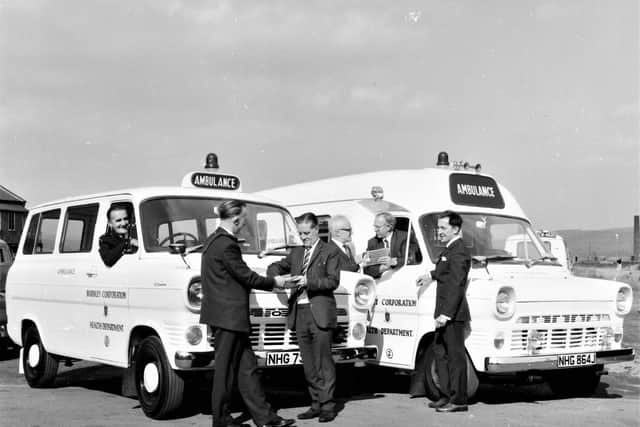From the Burnley Express Archive: Ambulances have come a long way in 50 years
and live on Freeview channel 276
It features two new ambulances for Burnley’s health department. They were supplied by a Blackburn firm and, according to the reporter, they cost £1,500 to build.
However, I am not sure that this means £1,500, for each, or whether it refers to a total figure, which may, or may not, be on top of the original price of the vehicles. They were intended for the Health Department and the vehicles would be on the road within the week.
Advertisement
Hide AdAdvertisement
Hide AdI suppose that it would have been the Health Department of the Council. In those days Burnley was still a top tier council, a County Borough, and it had charge of matters relating to health in the town. Dr E. P. Whittaker, the Deputy Medical Officer of Health, is present in the picture, as was Mr A. Pilling, the Chief Administration Officer of the Health Department, so it would indicate that the vehicles were not for the ambulance service.


Though the vehicles in today’s image look to be very similar, Ford Transits, I think, they were, in fact, rather different. One of the vehicles was a complete ambulance but the other was a sitting vehicle.
When one considers the ambulances of today, with their colourful coachwork, flashing lights and sirens, these look to be quite primitive vehicles. It probably tells us just how far we have come in the 50 years since this image was published in the Express.
The word ambulance interested me when, at school, I was doing French. St Mary’s Boys School did not do French but a small group of us were chosen to work with a young French Assistant. The first French person I had met. Somehow, we came to the French “ambulare”, which means “to walk about”.
Advertisement
Hide AdAdvertisement
Hide AdI could see the connection with ambulate, ambulation, ambulator and ambulatory; which mean, in turn, to walk, a walk, a walker and of or for walking. An ambulant is a walker or someone who travels from place to place by foot.
I get that, but I could not work out how this could be equated with the purpose of an ambulance, a vehicle for the conveyance of people who are sick. No-one has explained it to me and it was about 60 years ago that the thought first struck me!
It is not important, of course. I can live without knowing, but if you know, please contact me and explain it to me.
Comment Guidelines
National World encourages reader discussion on our stories. User feedback, insights and back-and-forth exchanges add a rich layer of context to reporting. Please review our Community Guidelines before commenting.